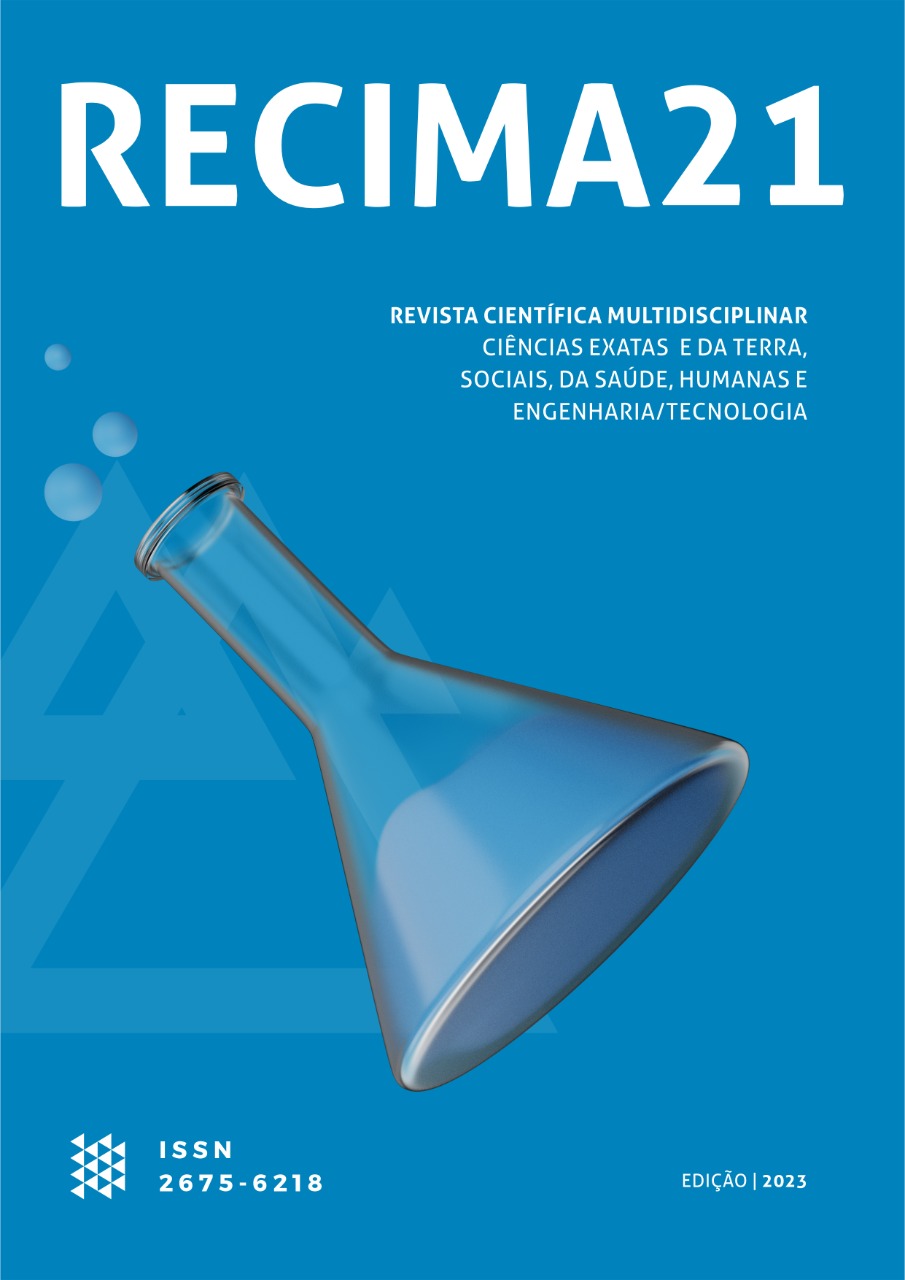DEMOGRAPHIC AND EPIDEMIOLOGICAL PROFILE OF ACUTE CHAGAS DISEASE
DOI:
https://doi.org/10.47820/recima21.v4i11.4239Keywords:
Acute Chagas disease, oral transmission, epidemiology.Abstract
Acute Chagas disease (aChas) is a neglected zoonosis that causes various social and economic damages, so this article aims to know the current epidemiological profile of this disease. A descriptive, documentary, and retrospective study was conducted, based on notifications of CDa registered in the Notifiable Diseases Information System between 2007 and 2018. The annual incidence of CDa is 0.11 cases/100,000 inhabitants, and is more frequent in the northern region of the country. During the period, it was more reported in the urban area and in the age groups of children and adolescents and young adults, with the main cases recorded from August to December. Deaths were rare, however, many segments were ignored. The present study reveals the epidemiological change of ACD, with the primary factors being the oral route, the urban environment and working-age adults. In addition, the months with the highest rates of notifications were from August to December, resulting from the açaí harvest in Pará. In Brazil, there is a high incidence of the disease, however, there is a loss of notification in the Notifiable Diseases Information System (SINAN), resulting from the high rates of asymptomatic patients, which are not accounted for in the statistics. Therefore, it is worth emphasizing the change in the dissemination of DCA, as well as the socioeconomic and public health impacts.
Downloads
References
Bern C, Martin DL, Gilman RH. Acute and congenital Chagas disease. Adv Parasitol.
;75:19-47. doi: 10.1016/B978-0-12-385863-4.00002-2.
Pinto AYN, Valente SA Valente VC, Ferreira Junior AG, Coura JR. Fase aguda da doença de Chagas na Amazônia brasileira: estudo de 233 casos do Pará, Amapá e Maranhão observados entre 1988 e 2005. Rev. Soc. Bras. Med. Trop. 2008 Dec; 41(6): 602-614. doi:10.1590/S0037-86822008000600011.
Rassi A Jr, Rassi A, Marin-Neto JA. Chagas disease. Lancet. 2010 Apr 17;375(9723):1388-402. doi: 10.1016/S0140-6736(10)60061-X.
Andrade DV, Gollob KJ, Dutra WO. Acute chagas disease: new global challenges for an old neglected disease. PLoS Negl Trop Dis. 2014;8(7):e3010. Published 2014 Jul 31. doi:10.1371/journal.pntd.0003010
Barry MA, Murray KO, Hotez PJ, Jones KM. Impact of vectorborne parasitic neglected tropical diseases on child health. Arch Dis Child. 2016 Jul;101(7):640-7. doi: 10.1136/archdischild-2015-308266. Epub 2016 Feb 26. PMID: 26921274.
DIAS, João Carlos Pinto. Globalização, iniqüidade e doença de Chagas. Cad. Saúde Pública, Rio de Janeiro , v. 23, supl. 1, p. S13-S22, 2007 . Available from
<http://www.scielo.br/scielo.php?script=sci_arttext&pid=S0102- 311X2007001300003&lng=en&nrm=iso>. access on 16 Apr. 2021.
https://doi.org/10.1590/S0102-311X2007001300003.
Coura JR. The main sceneries of Chagas disease transmission. The vectors, blood and oral transmissions-a comprehensive review. Mem Inst Oswaldo Cruz. 2015;110(3):277– 282. doi:10.1590/0074-0276140362
Doença de Chagas. Boletim Epidemiológico, Secretaria de Vigilância em Saúde - Ministério da Saúde, Abr. 2021, número especial. Disponível em: < https://www.gov.br/saude/pt- br/media/pdf/2021/abril/14/boletim_especial_chagas_14abr21_b.pdf>. Acesso em: 28, maio, 2021.
https://www.revistas.ufg.br/iptsp/article/viewFile/10738/7137
DIAS, João Carlos Pinto et al . II Consenso Brasileiro em Doença de Chagas, 2015. Epidemiol. Serv. Saúde, Brasília , v. 25, n. esp, p. 7-86, jun. 2016 . Disponível em
<http://scielo.iec.gov.br/scielo.php?script=sci_arttext&pid=S1679- 49742016000500007&lng=pt&nrm=iso>. acessos em 30 maio 2021. Epub 30-Jun-2016. http://dx.doi.org/10.5123/s1679-49742016000500002.
Downloads
Published
Issue
Section
Categories
License
Copyright (c) 2023 RECIMA21 - Revista Científica Multidisciplinar - ISSN 2675-6218

This work is licensed under a Creative Commons Attribution 4.0 International License.
Os direitos autorais dos artigos/resenhas/TCCs publicados pertecem à revista RECIMA21, e seguem o padrão Creative Commons (CC BY 4.0), permitindo a cópia ou reprodução, desde que cite a fonte e respeite os direitos dos autores e contenham menção aos mesmos nos créditos. Toda e qualquer obra publicada na revista, seu conteúdo é de responsabilidade dos autores, cabendo a RECIMA21 apenas ser o veículo de divulgação, seguindo os padrões nacionais e internacionais de publicação.













